A local supermarket chain offered bone-in pork shoulder butt roasts for a dollar a pound last week. The Supply & Demand Gods had once again smiled upon us. After boning, useable pork cost came out to $1.07 per pound. But, bargain priced meat should not be the only reason for undertaking home further processing. In this case my efforts are more worthwhile because the starting-raw meat is of a higher quality than the pork trimmings used commercially to make sausage, the convenience food trend is now firmly entrenched in American culture, a possibly healthier product formulation can be achieved, a personal flavor profile can be reached, desirable loose textured end-product is assured and precooked sausage maintains higher quality better than raw sausage in freezer storage. Salt in raw, frozen sausages can oxidize fat fairly quickly.
I’m not going to repeat all the basic steps that were covered in my Fresh Sausage Tutorial blog post. So, if you want to review them (Click Here).
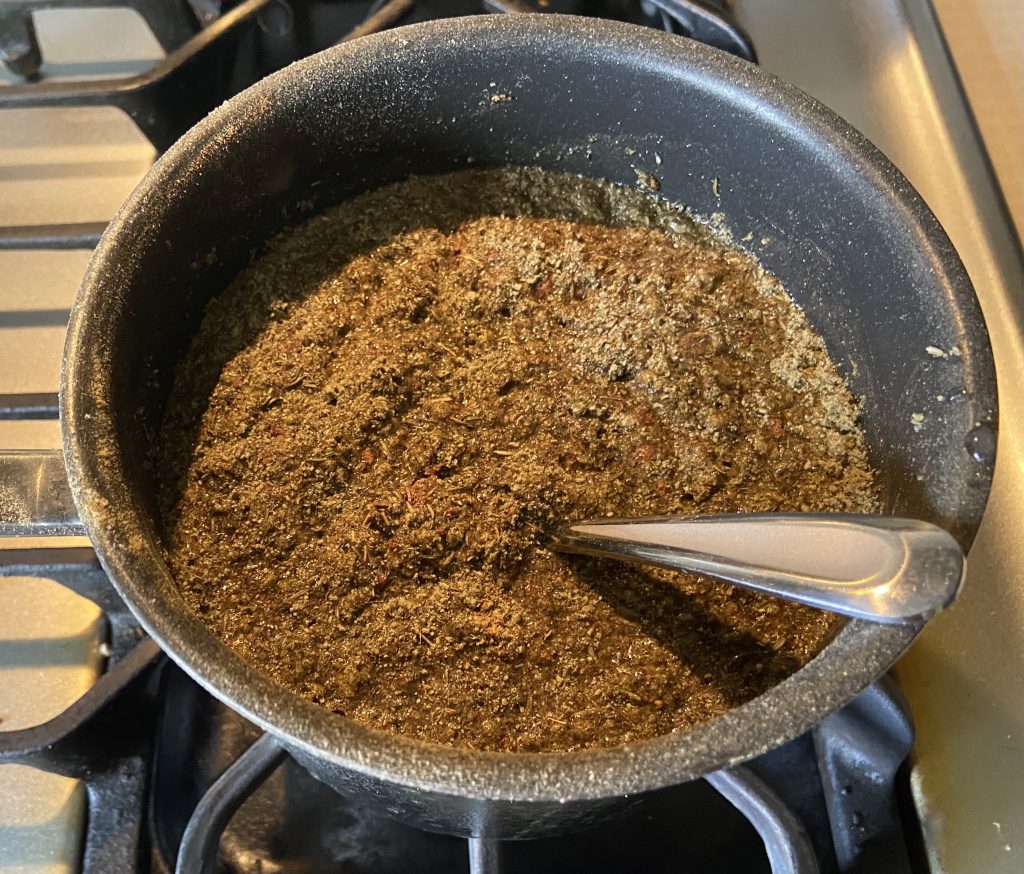
Breakfast Sausage seasonings starting to slow boil for 2 to 3 minutes. After boiling, salt and brown sugar are stirred in; then seasoning blend is set aside to cool, and chill. I used the Breakfast Sausage 25 pound batch recipe from the Great Sausage Recipes and Meat Curing book (p. 169); then adjusted it to my 29.7 pound meat batch. If you want to learn easy batch adjustment (Click Here). As usual, I cut the recipe called-for amount of salt in half; because the starting raw pork was “All Natural” & “Minimally Processed.” And in hindsight, I should have also cut back on the amount of recipe called-for water. Modern mainstream retail fresh pork seems to be routinely pumped slightly with the natural ingredients water & salt. Neither sodium phosphate or brown sugar were part of the Book recipe. Sodium phosphate was added to increase finished product moisture retention and to inhibit fat oxidation during freezer storage. Brown sugar was mainly added to enhance precooked patty browning during final cooking (frying). For this 29.7 meat pound batch I used 2.5 TBSP of sausage sodium phosphate and .4 cup of brown sugar (the same amount as salt).
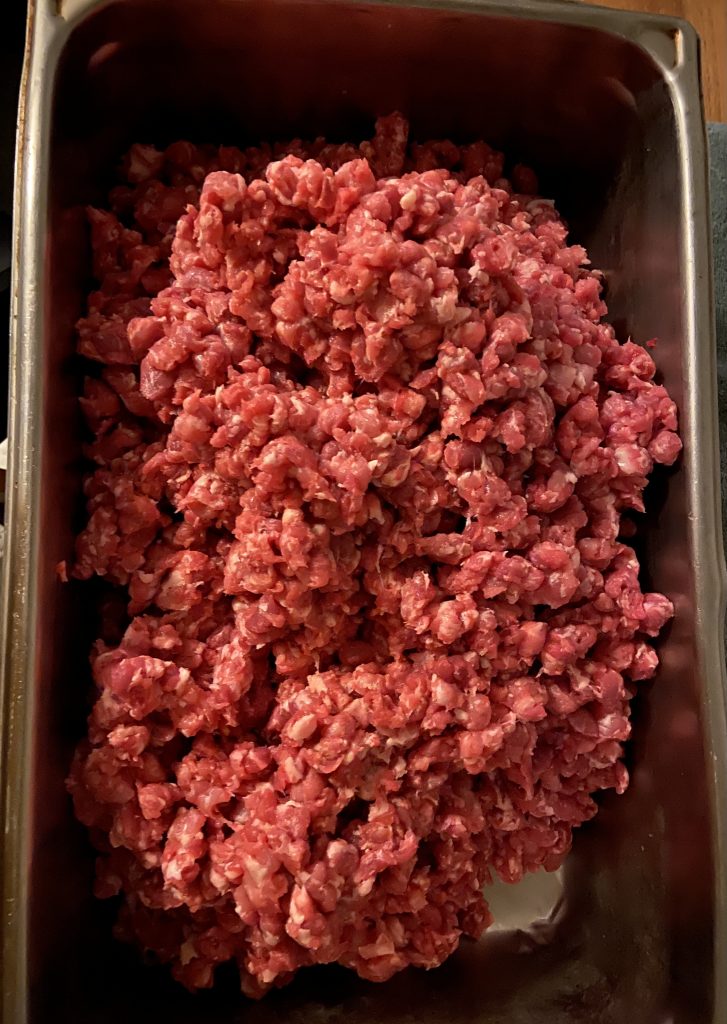
In the Fresh Sausage Tutorial post I made very coarse-ground Polish sausage. Here, all the lean pork component was ground twice through a 3/4 inch hole-size plate. That practice makes for a loose textured finished product. But, those larger pieces of shoulder meat do have to cook a long time in order to gel tender. That is to say, frying this coarser textured sausage hot-and-quick is not recommended. Instead, we will make precooked tender sausage that’s intended to be skillet browned just before serving.
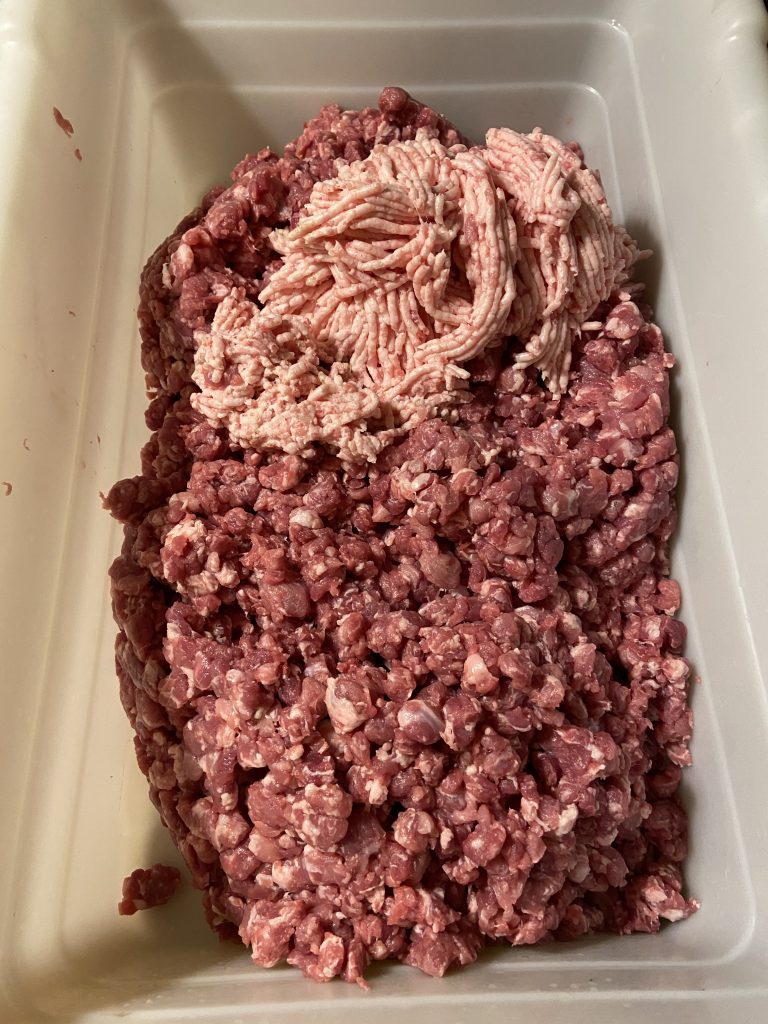
There was not much fat on the retail-trim butts that I bought. Still, the coarse ground lean assures that finished product texture stays loose. As in the Fresh Sausage Tutorial, the separate fat component went once through a 3/16 inch grinder plate.
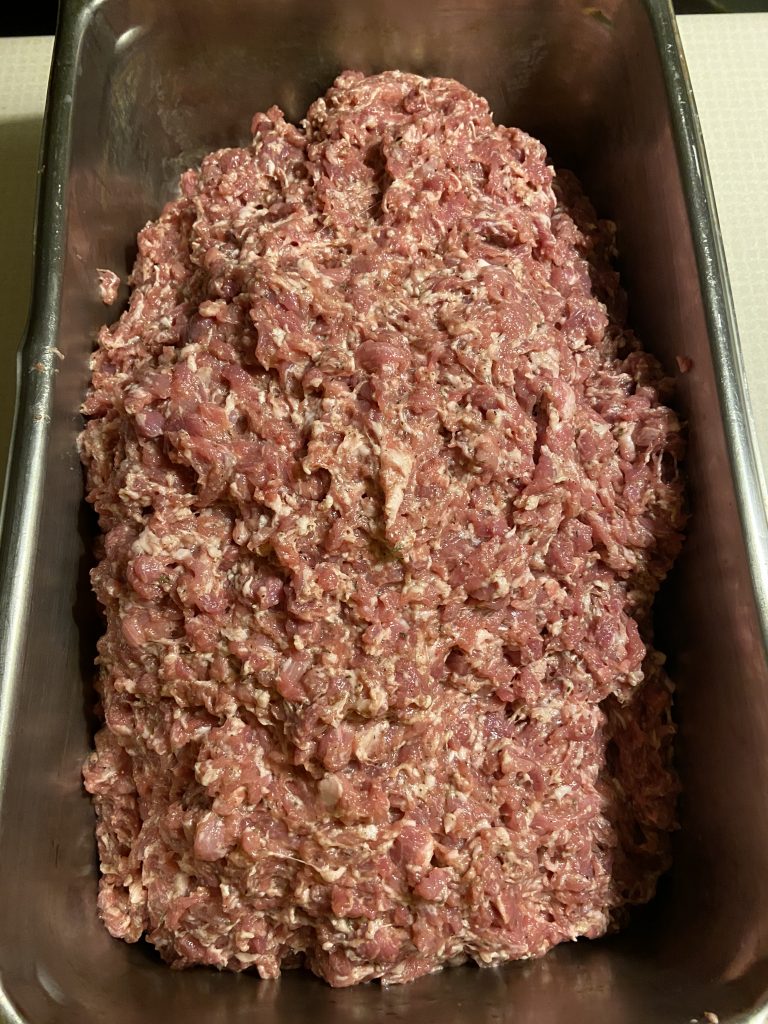
Add dissolved sodium phosphate to the batch first. Mix it a short while then add in the chilled seasoning blend. Mix until everything is well distributed and the batch becomes somewhat sticky.
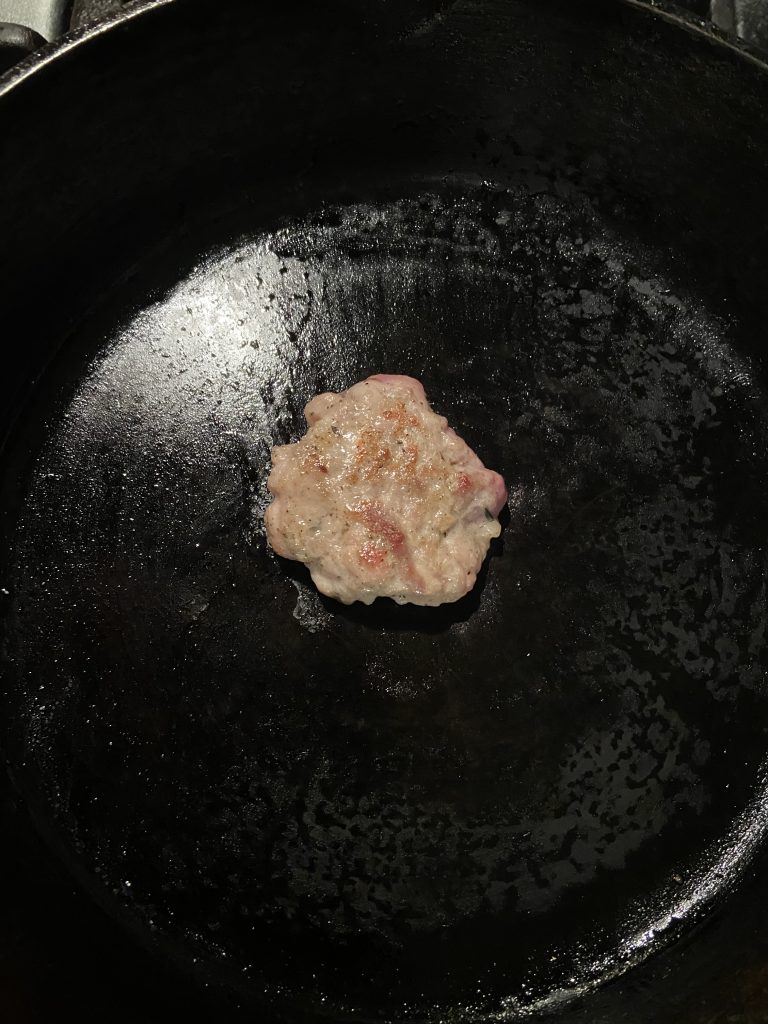
Fry-up a small patty to test for desired flavor. If need be, adjust the batch with dry spices at this point. As noted earlier, fast fried test patties will be chewy due to the coarse ground lean.
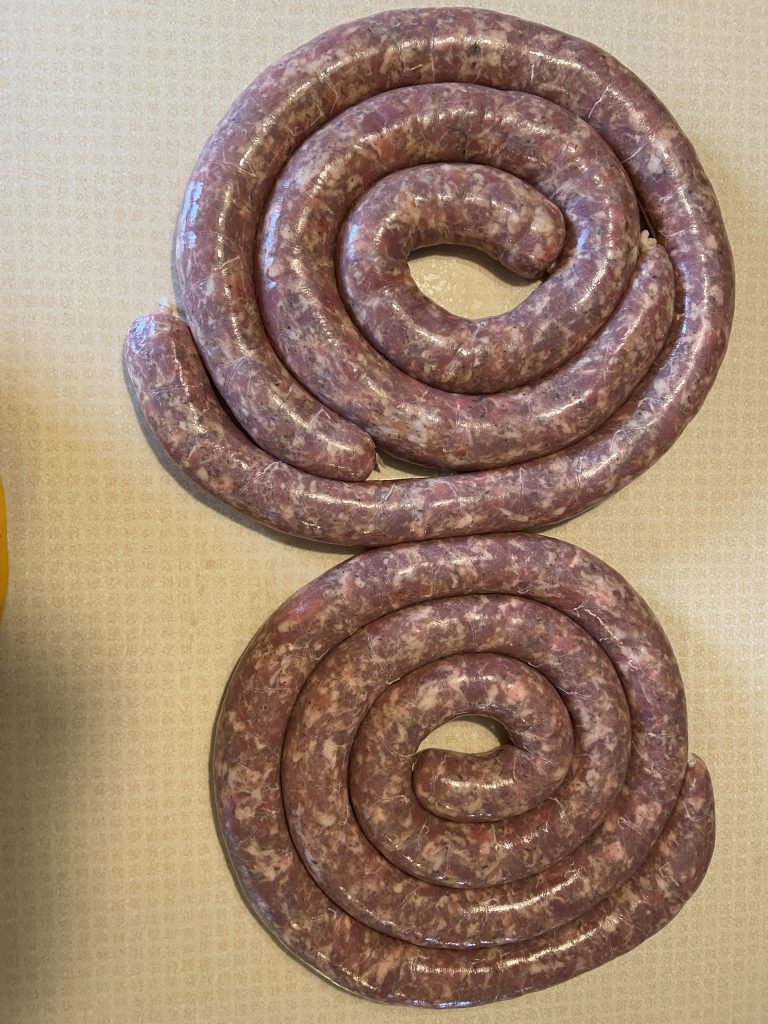
Stuff into coil lengths that fill a gallon size plastic zip-lock bag. 35 – 38mm hog casings were used here, but 38 – 42mm hog casings will make slightly larger diameter precooked patties.
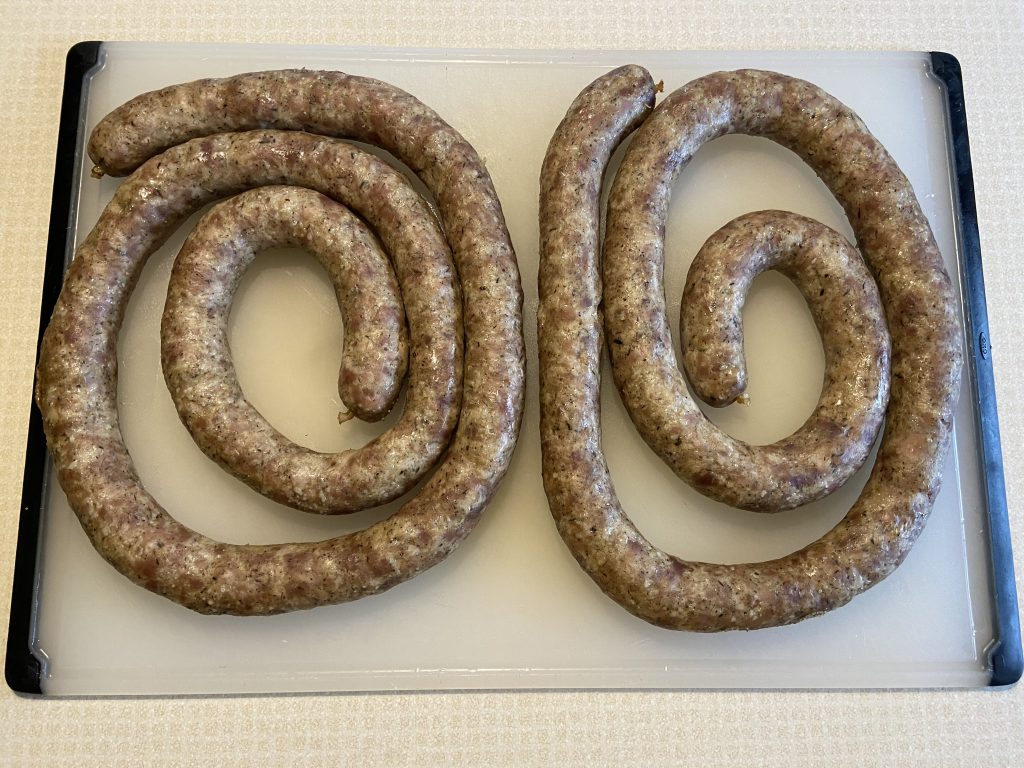
Steam-cook on a rack (up out of liquid) at 250F for 1 hour and 45 minutes. If the casings split very much, reduce the cooking time slightly on the next cook. Let the cooked sausage coils cool an hour or more before slicing them into little patties.
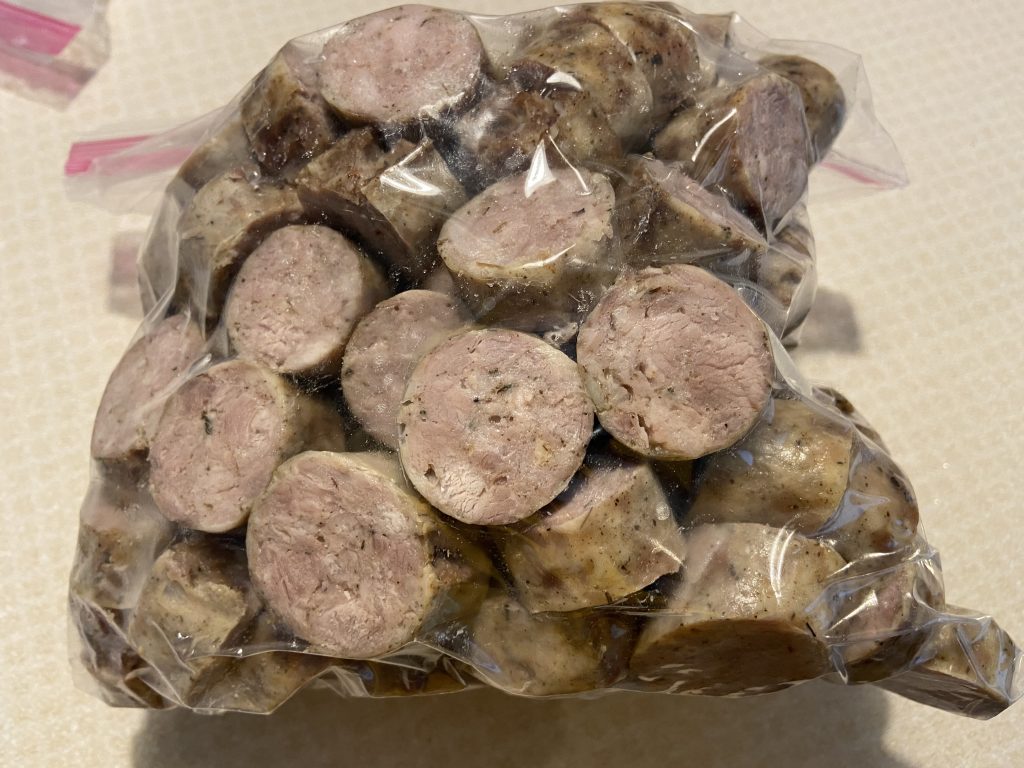
Load sliced sausage pieces into one gallon zip-locked bags and squeeze out most of the air as they are sealed.
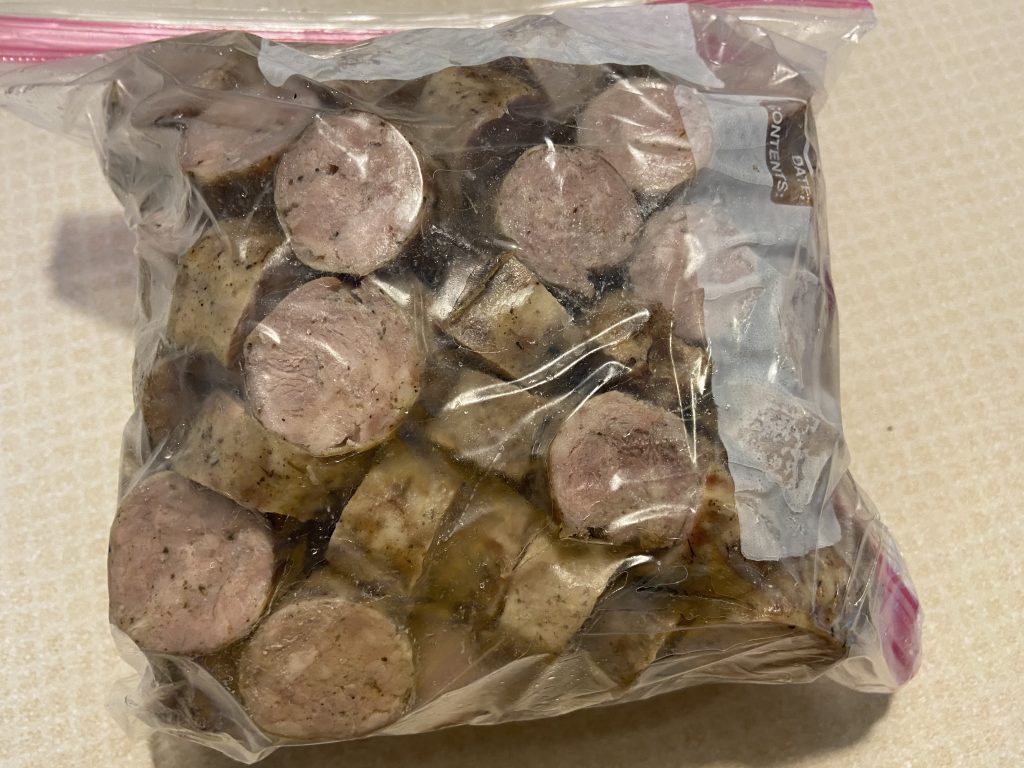
Double bag the mini-sausage patties and freeze overnight.
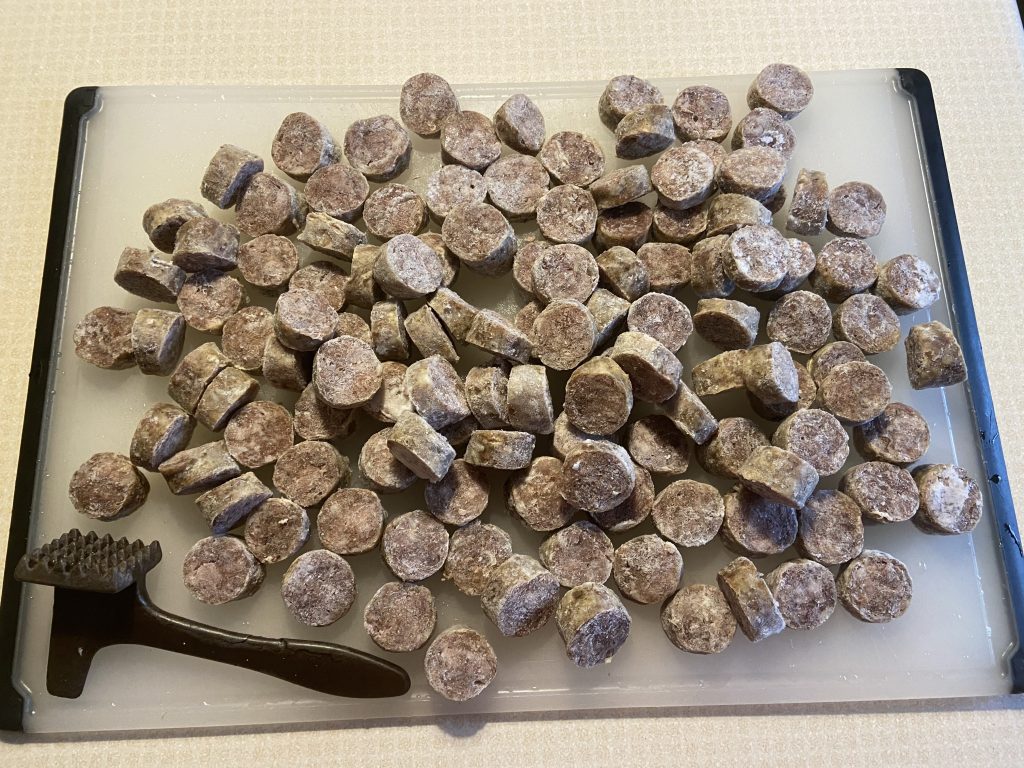
Frozen mini-patties break apart fairly easily.
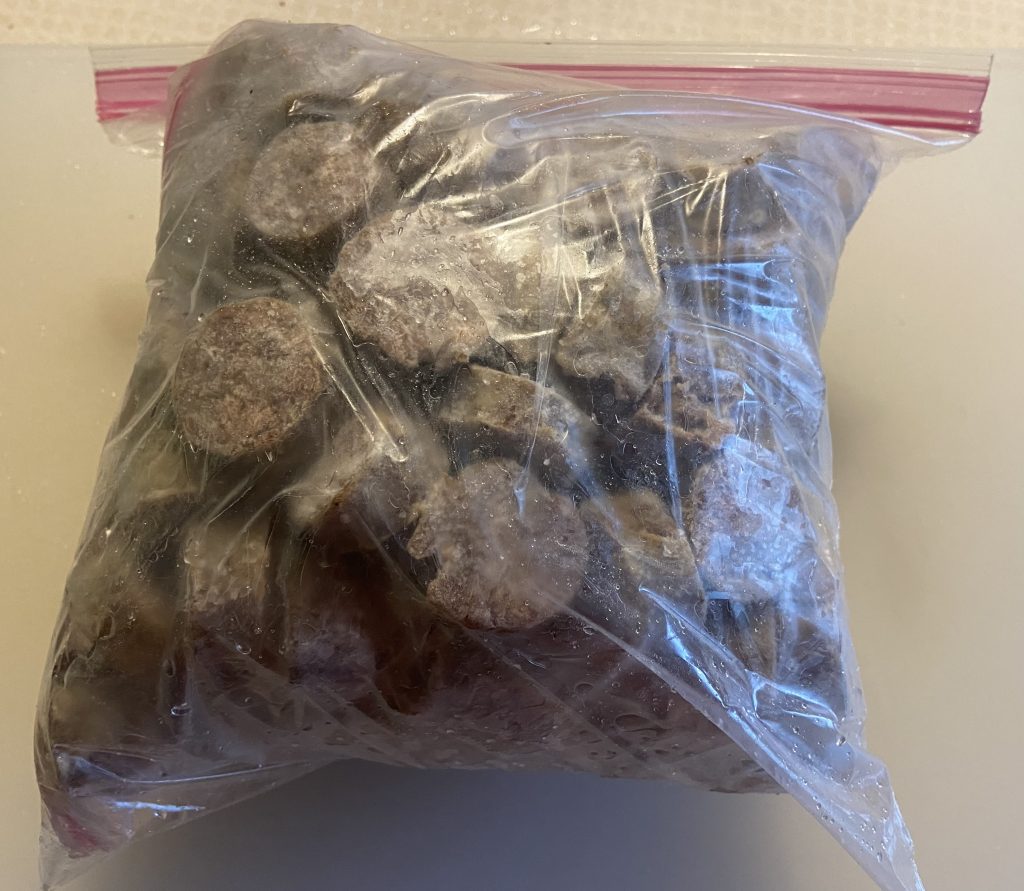
Place the frozen patties back in a one gallon plastic bag and double wrap using a second bag. Immediately place bags of individually frozen mini-patties back into freezer storage.
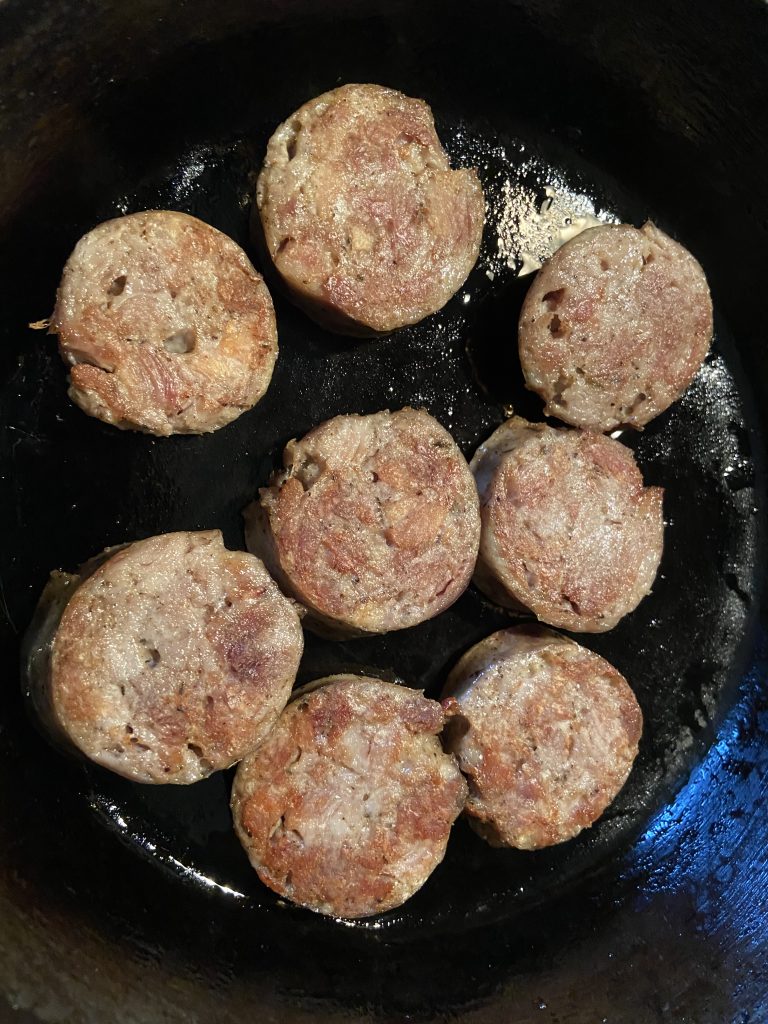
Remove as many patties as you want and brown them in a skillet.
Enjoy easting better for less money.
